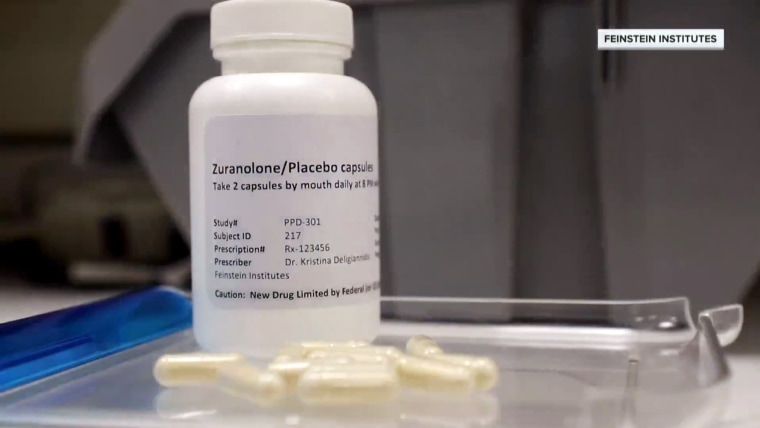Research published on Wednesday in The New England Journal of Medicine found that a nasal spray version of esketamine was more effective than a more widely used drug for treating depression that is resistant to treatment.
For many years, doctors have used ketamine, an anesthetic, to treat depression. Esketamine is a stronger version of ketamine. The Food and Drug Administration approved Janssen Pharmaceuticals’ nasal spray, known as Spravato, in 2019 for the treatment of treatment-resistant depression. The new study, conducted in 24 countries in Africa, Asia, Europe, and South America, was funded by Janssen.
Dr. Michael Grunebaum, an associate professor of psychiatry at Columbia University Medical Center in New York City and a research psychiatrist at the New York State Psychiatric Institute, stated that “treatment-resistant depression is a pretty significant problem.”
According to Grunebaum, a ketamine researcher who was not involved in the new study, the condition, which is commonly defined as depression that does not respond to two or more consecutive drug treatments, is thought to affect 30% to 50% of people with major depressive disorder.
The study involved the random assignment of 336 adults with treatment-resistant depression to receive nasal esketamine in addition to their current antidepressant medication, which could be either a serotonin-norepinephrine reuptake inhibitor (SNRI) or a selective serotonin reuptake inhibitor (SSRI). 340 more patients increased their dosage of quetiapine. The antipsychotic medication Seroquel, which has been on the market since 2007, is also known by its generic name, quetiapine. It is occasionally used to increase the effects of antidepressants in patients with treatment-resistant depression.
Compared to 17.6% of the quetiapine group, 27.1% of patients on esketamine were in remission at the eight-week mark, which means they were mostly symptom-free. Compared to 14.1% of patients on quetiapine, 21.7% of patients in the esketamine group had maintained remission by 32 weeks after achieving it at eight weeks.
The outcomes, according to Grunebaum, were “quite significant.”
One of the paper’s authors, Dr. Allan Young, is an academic psychiatrist at King’s College London. He noted that although the percentage of 27.1% may seem low, it is higher than the benchmark: According to Young, 13% of patients with treatment-resistant depression experienced remission after taking one of the biggest and longest U.S. studies on depression at the start of this century.
Furthermore, Young noted that the remission in the previous study was transient. They improved, but it was fleeting. They resumed their melancholy,” he remarked.
Nevertheless, Dr. Amit Anand, a director of translational clinical trials at Brigham and Women’s Hospital in Boston and a professor of psychiatry at Harvard Medical School, noted that the rates of remission observed in the esketamine study were low.
Anand, a ketamine researcher who was not involved with the new paper, stated, “The bottom line is that better treatments need to be developed.”
It is not surprising, according to Grunebaum, that not every patient who experienced remission at week eight did so by week thirty-two. He claimed that he wasn’t particularly impressed by how little it seemed to differ from conventional antidepressant drugs.
Furthermore, the study demonstrated that after eight weeks, an increasing proportion of patients in both groups remained in remission. By week thirty-two, 32.9% of patients receiving quetiapine and 49.1% of patients receiving esketamine were in remission.
The study was not without flaws. It only included a single drug comparison for nasal esketamine. In addition, low-dose lithium, thyroid medication, atypical antidepressants like bupropion, and the Parkinson’s disease medication pramipexole are used to supplement treatment in patients with treatment-resistant depression.
Grunebaum added that since 90% of the patients were White, the findings might not hold true for individuals of other racial backgrounds.
According to Anand, the way the drugs were administered could have distorted the findings. While those taking quetiapine took a pill at home, those receiving nasal esketamine had to come to the hospital twice a week to take the nasal spray in front of medical staff.
“The level of care provided to the patients is incomparable,” he declared. It’s enormous. It’s possible that the extra care given to the esketamine group’s patients decreased their depressive symptoms.The long-term safety of esketamine is unknown. Grunebaum, who doesn’t give ketamine to his patients in any form, said that research on ketamine addicts has revealed possible harm to both the lining of the bladder and the brain.
“Generally, we can find a combination of common medications that function well together,” he stated. “I’m awaiting additional details regarding long-term safety.”
Medicare and other insurance plans might cover Spravato, but Grunebaum noted that diagnosing patients with treatment-resistant depression takes a lot of time for medical professionals. Other medications used to supplement treatment are more easily covered by insurance, and many of them are generic.
Additionally, because of its potential for abuse and addiction, ketamine is regarded as a controlled substance in the United States. It must be taken at the clinic or office of a medical professional. Many people might favor taking their medication at home.
However, according to Young, the study’s author, the frequency of nasal spray visits decreases with time, going from twice a week at first to every two weeks for maintenance. “It can be stopped pretty soon for one of my patients who takes it once every eight weeks,” the doctor stated.

